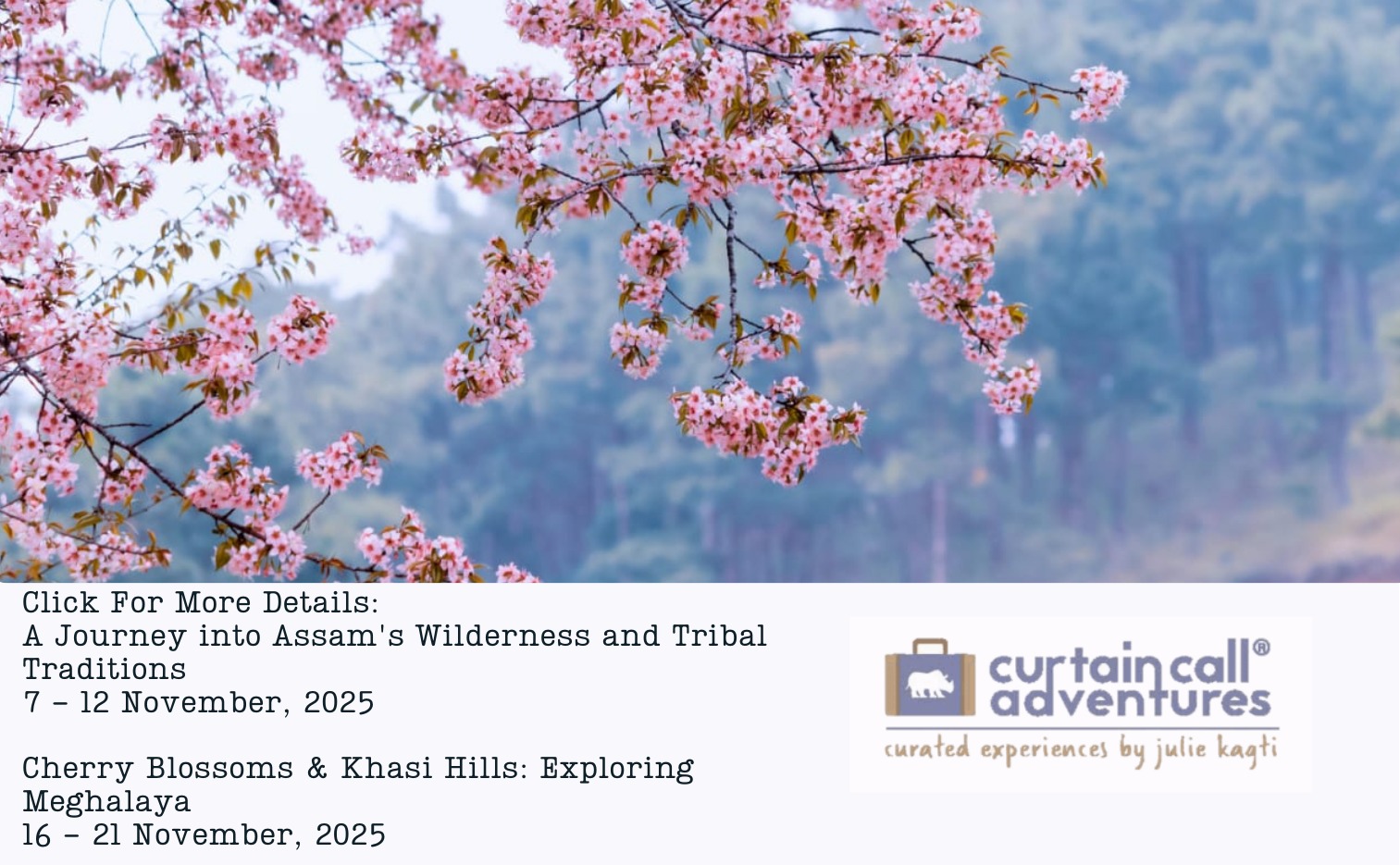Touring across bio diverse hotspots in Assam and Arunachal, here’s an in-depth account of rare bird sightings in breath-taking vistas
As we made our way through rain swept hillsides, snowy peaks and verdant valleys on an eight-day birding tour across Assam and Arunachal Pradesh, each of us came back with a cache of treasured memories. From spotting rare birds such as the White Winged Wood Duck and the Bugun Liocichla to relishing home-cooked meals in open hill country, every day was a surprise. In this day-to-day account of our adventures, you can travel with us as we journey through Nameri National Park, Eaglenest Sanctuary, Singchung Bugun Community Reserve, Mandala, Sela Pass and Sangti Valley – some of the best known hotspots in the Northeast of India for bird watching.
Day 1 – Great Expectations
We woke up to great weather, but midway through breakfast it had taken a turn for the worse and some typical April showers had come to say hello! The temperature dropped to a welcoming 26°C… a wonderful respite from the heat in Guwahati.
Our tour started with the arrival of guests on the early flight into Guwahati at 7:30 am. Our birding guide, Milo, was able to take them to a site near the airport which is favoured by the Greater Adjutant Stork. Once found widely across southern Asia, the Greater Adjutant is now restricted to a much smaller range with the largest colony found in Assam, and a smaller one around Bhagalpur, in Bihar.
After breakfast we all set off to our next destination in Tezpur. Along the way we admired the ponds filled with water hyacinths; the rain seemed to have washed away all the summer dust. En route we enjoyed a traditional Assamese fish thali lunch. It was a long drive so we were happy to stop at a chai stall on the way, and on arriving at our friend’s place in Tezpur, we could all relax and enjoy the evening meal. The day ended with us looking forward to spending time inside the forest tomorrow.
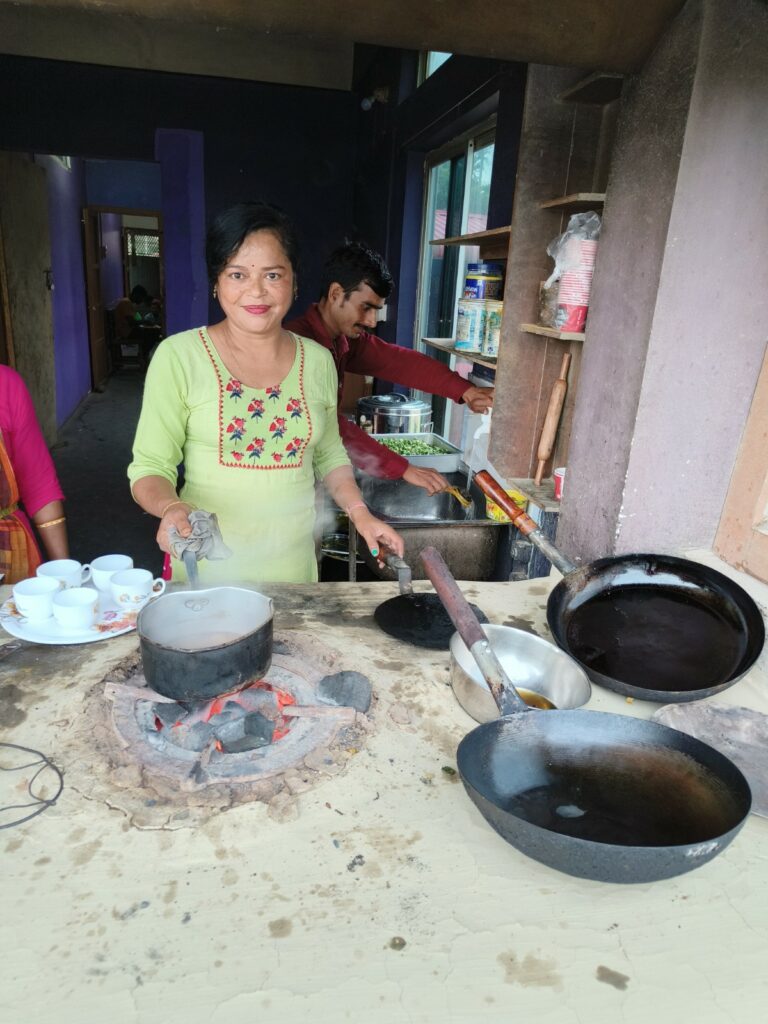
Day 2 – Nameri National Park & Tiger Reserve
Today we transitioned from the plains of Assam into the hills of Arunachal Pradesh. It was a wonderful morning walking inside Nameri Tiger Reserve with views of the lower Himalayan hills. Located about 35 kms from Tezpur, Nameri is home to over 350 species of birds. Straddling the border of Assam and Arunachal Pradesh, it covers an area of 200 sq kms and has the river Jia Bhorali running through it. We got a rare sighting of the state bird of Assam – the White Winged Wood Duck (the ‘Deo Hans’ or Spirit Duck as it’s known in Assamese) as well as Wreathed Hornbills among others.
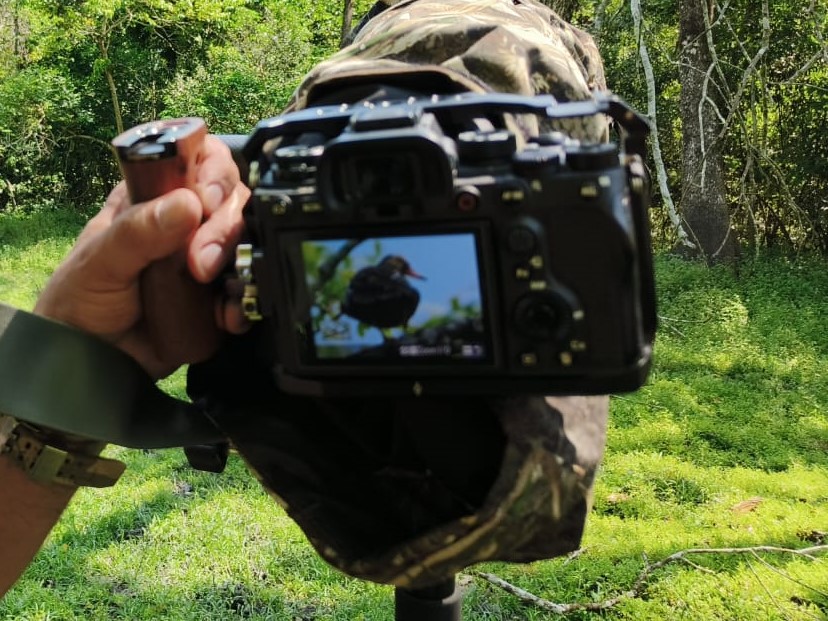
Our late breakfast doubled up as a brunch where we were served delicious aloo parathas and puris with masala omelettes. Afterwards, we visited a Mishing tribal home to see the women weave textiles with bright, vibrant colours.
The drive into Arunachal was a treat in itself, with lush green vegetation and scenic vistas. We had a few interesting stops en route to Tenga Valley. One was the Tippi Forest office to see their interpretation centre, which was very well designed, interactive for all age groups and a store-house of information on the importance of rainforests, and on the flora and fauna of Pakke Tiger Reserve.
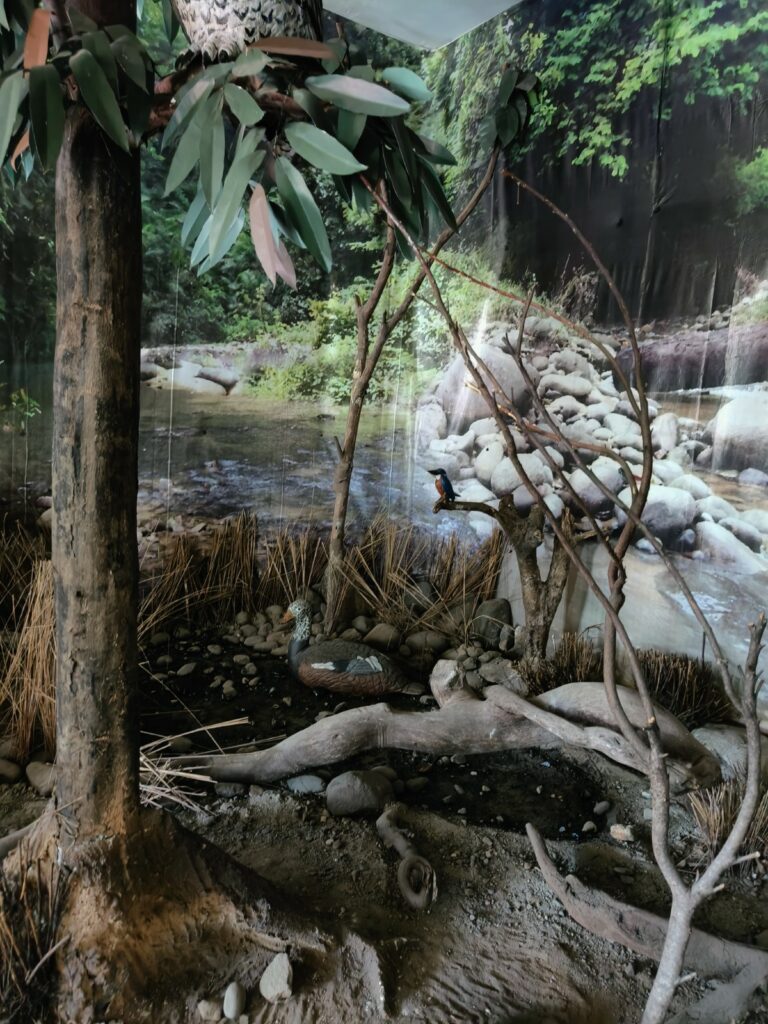
Next up was the Sessa Orchid Sanctuary, where we saw the Black Cobra Lily in bloom among others. While some of us admired the orchids, others made their way down the hill to do a spot of birding. The highlight was spotting the Plumbeous Water Redstart, a tiny blue and orange songbird found near fast-flowing streams and rivers.
Our last stop was to stretch our legs by walking over a suspension bridge, a break to enjoy a much-needed cup of hot coffee and freshly steamed momos.
Checking into our hotel, it’s time for a hot shower, chatting with the group and dinner, before an early start the next day.
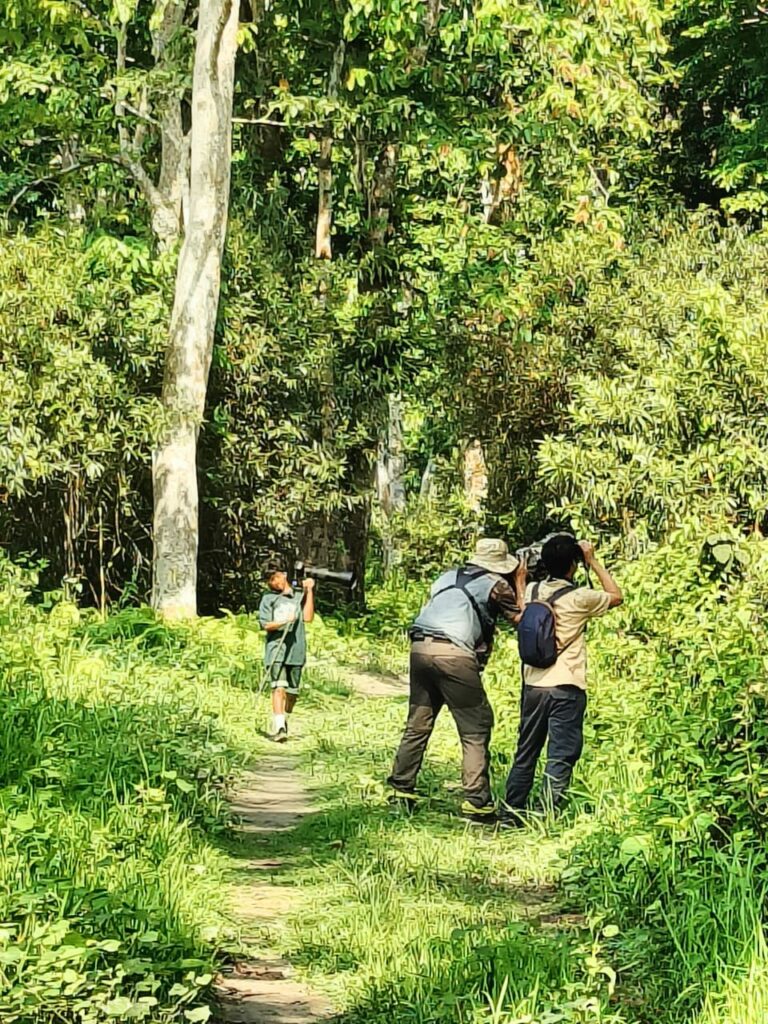
Day 3 – Singchung Bugun Community Reserve
Early in the morning we headed up the mountain behind the hotel to the Singchung Bugun Community Reserve. This is a large wooded area teeming with bird life. Lying adjacent to Eaglenest Wildlife Sanctuary and Sessa Orchid Sanctuary, this 17 sq km biodiversity hotspot in Arunachal Pradesh is famous for the rare Bugun Liocichla, a bird found only in this forest and named after the local community.
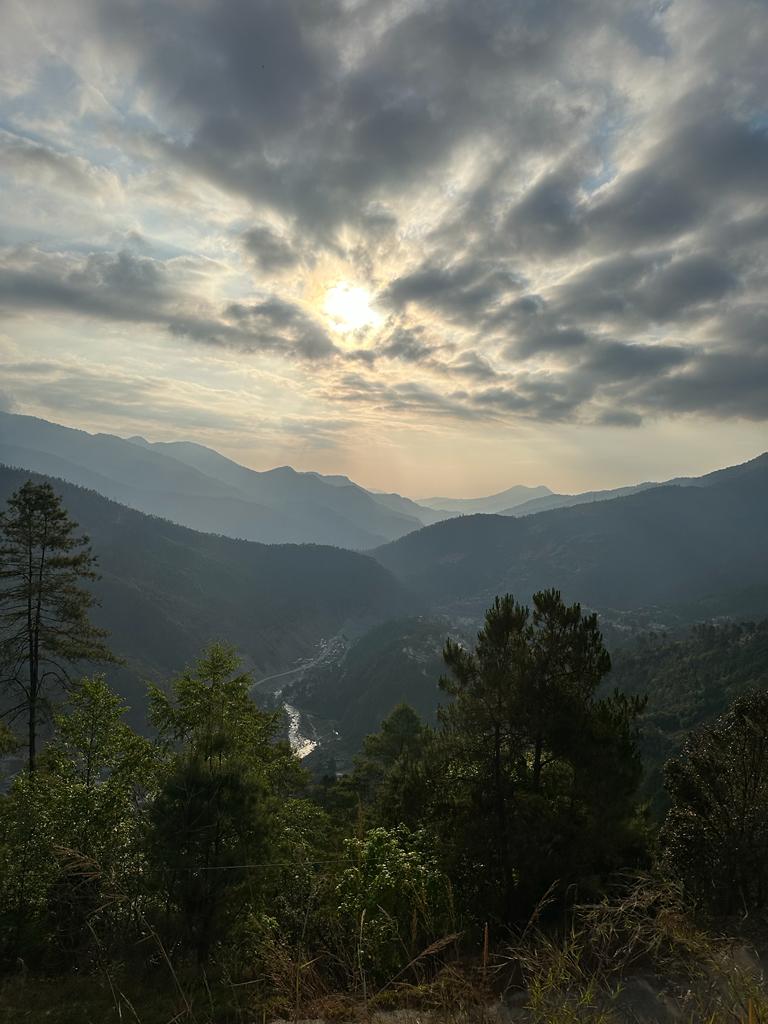
Ambling through the forest was a delight to the senses as there was much to take in. It was a very successful photography session, and we counted over 40 species that we had never seen before including the Himalayan Curia, the Maroon Oriole, the Red-billed Leotrix and the Rufous-headed Parrotbill. Our guide Tako is a walking birdopedia and extremely handy with the bird calls –both identifying them and playing back calls to attract the birds.
Lunch was served at Sonam’s house, a local villager who prepares home cooked meals. How great food tastes when eating in the middle of open hill country. The radish pickle was the perfect accompaniment to the rice, dal and hillside grown cauliflower.
Back in the forest we meandered through tree covered trails and ran into some young fern pickers, but unfortunately we did not spot the elusive Bugun Liocichla. We decided to return the next day hoping to catch a glimpse of it.
Day 4 – Eaglenest Wildlife Sanctuary
Our first stop was to see the Bugun Liocichla. Tako had done his homework; within 15 minutes of reaching the spot we saw a male and female, but they were not in the mood for a photo op as they skittered between branches. Nevertheless the group was happy to have spotted two rare species within three days of their trip.
The ride to Eaglenest would have stopped many a vehicle but not the Sumo and its fearless driver Sonam. Spread across 218 sq km, Eaglenest boasts of varied topography – from tropical rainforest to temperate conifer forests. Set up in 1989, Eaglenest hosts over 500 species of birds (second in the world only to the eastern slope of the Andes in South America). We had wondrous views of the mountain ranges drifting in and out of the mist. The vegetation changed and the temperature dropped as we rattled along. We stopped and walked to the entrance in warm sunshine and soft light – perfect for photographing the powder blue Verditer Flycatcher and the Striped-throated Yuhina, the latter found only in Arunachal. The entrance to Eaglenest is at an altitude of 2700 metres and the wind was bracing. We managed to find a sheltered spot to enjoy Sonam’s breakfast of chapati and bhurji. We proceeded to walk in the forest and immediately spied elephant dung and a tree with bear claw marks and its sleeping nook. The views were sweeping – it was the end of the rhododendron flowering season but some were still in bloom.
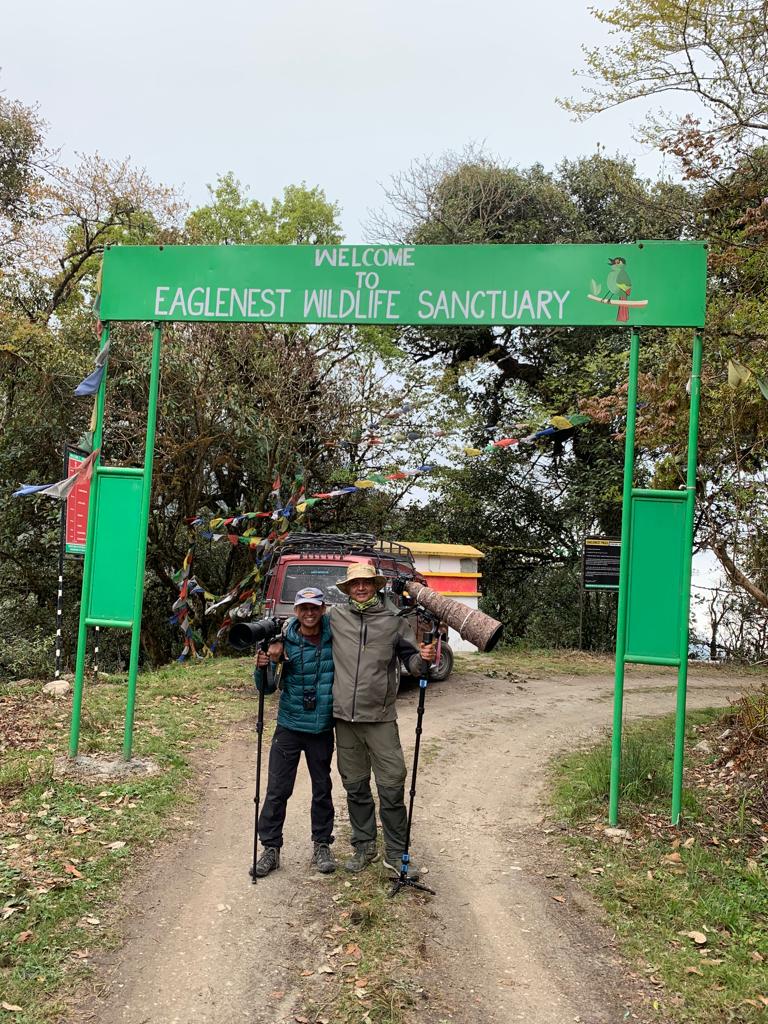
We walked till Sunderview camp before stopping for an outdoor lunch of fried rice and cauliflower. As it got cold, we returned to the jeep for the bumpy two-hour ride back to the hotel – tired but overwhelmingly satisfied with another day of incredible sightings including the Bugun Liocichla, Large Hawk Cuckoo, Rufous-capped Babbler, Blue Whistling Thrush and Greater Yellownape.
Day 5 – Mandala
Today was a leisurely start, much needed after all the early mornings so far! We stopped at a small restaurant for breakfast and were really impressed by their kitchen and the mud-baked fireplace.
We visited the Dirang Dzong – the only dzong (fort) outside of Bhutan. The Monpas living around Dirang, unlike nearby Tawang, came centuries ago from Bhutan. It’s worth the visit to see the beautiful stone architecture, and the village is listed under UNESCO as a heritage living site.
From there we started our climb up to Mandala to stay at the bird lodge perched on a hilltop providing great views of the mountains around. The lodge is a throwback to an era of colonial times and tea lodges, a basic wooden structure with a fireplace and a great cook.
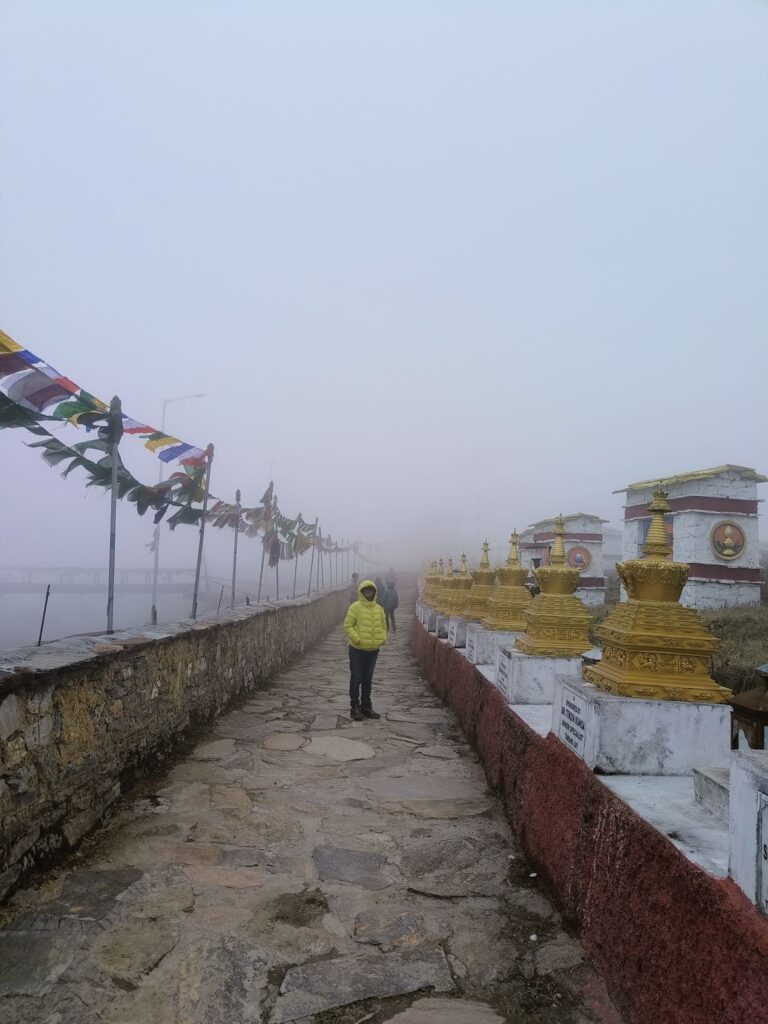
After lunch we went up to Mandala Top, located at 10,000 ft above sea level. With vegetation ranging from tropical evergreen forest in lower areas to coniferous forest in higher reaches, Mandala’s range of altitude makes it a biodiversity hotspot. Since we were so high up, the mist made it hard to spot any birds so we headed back down towards the forest near the lodge. We were rewarded with sightings of the Olive-backed Pipit, Rufous-fronted bushtit, Bhutan Laughingthrush, White-collared Blackbird and Beautiful Sibia.
Day 6 – Mandala and Sangti Valley
We woke up to a clear day with views of the snow-capped peaks. Before leaving, we walked down to the nearby woods and spotted few more feathered beauties including Chestnut-bellied Rock Thrush, Large Hawk Cuckoo, Dark-sided Flycatcher and Buff-throated Warbler. Unfortunately though, we didn’t spot the eagles that Mandala is known for.
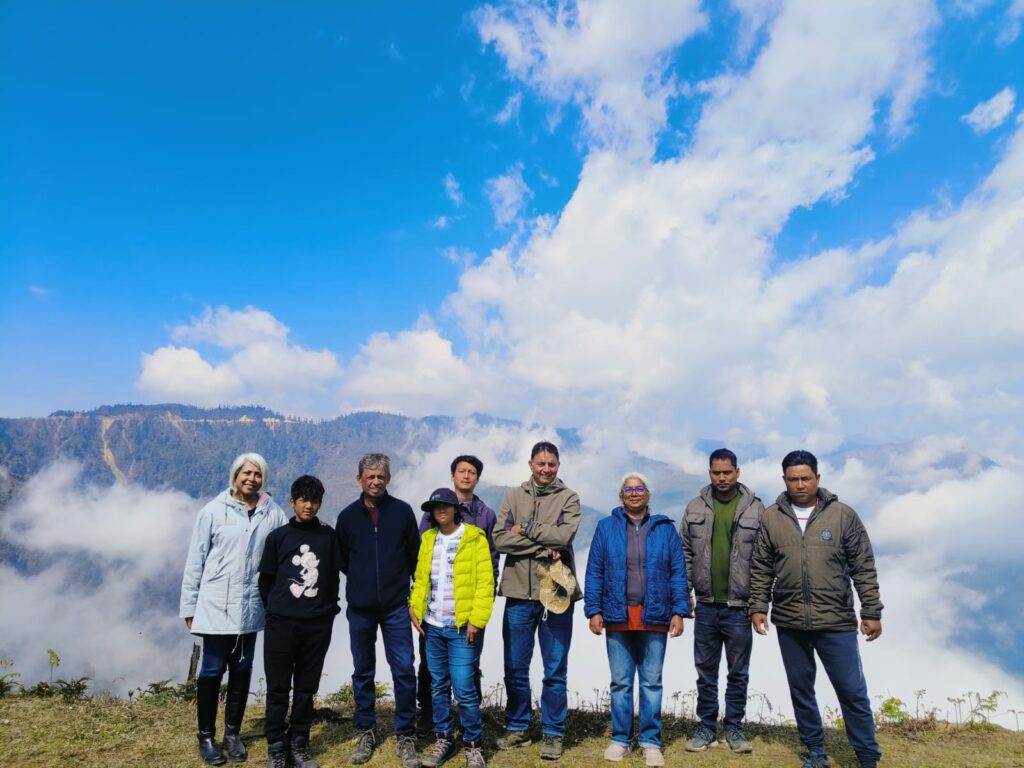
After breakfast, we drove down towards Dirang driving through beautiful hills filled with old juniper trees and small farms. Our stops included a quaint village, a few bird sightings and also glimpses of the endangered Arunachal macaques.
We checked into our hotel for a quick shower before heading out for lunch to a nice Naga restaurant. Later we drove along one of the most scenic drives in the region – the Sangti Valley where we spotted the Long-billed Plover by the riverside. Sangti, a quaint valley about eight km from the Dirang market, is nestled in the eastern Himalayan ranges. It is covered with dense forests and dotted with fruit orchards. We also did a short walk through a heritage village nearby, filled with charming rustic houses built of stone and wood and adorned with brightly coloured flowers.
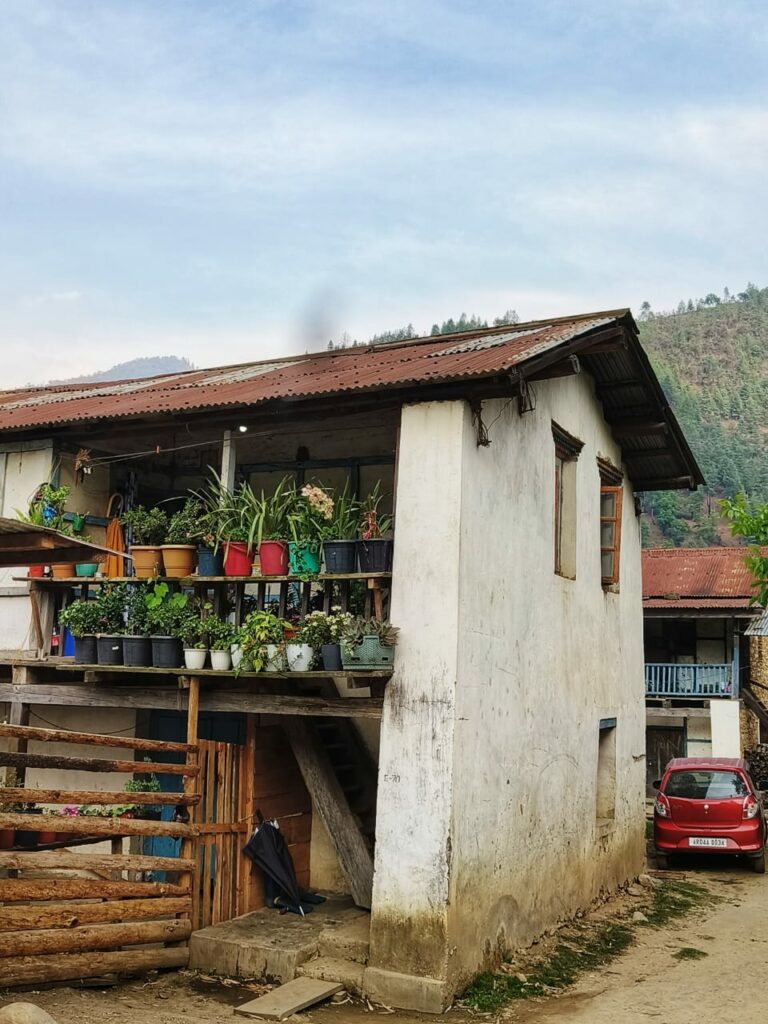
In the evening we visited Tsering Droma who lives in Dirang village for a glass of home-made local brew and a momo making class. We measured the thickness of her exterior walls – made of stone about 200 years ago – which were over a feet thick! And, yes, the momos were delicious. Then it was off to bed for a 3.45 am start the next morning!
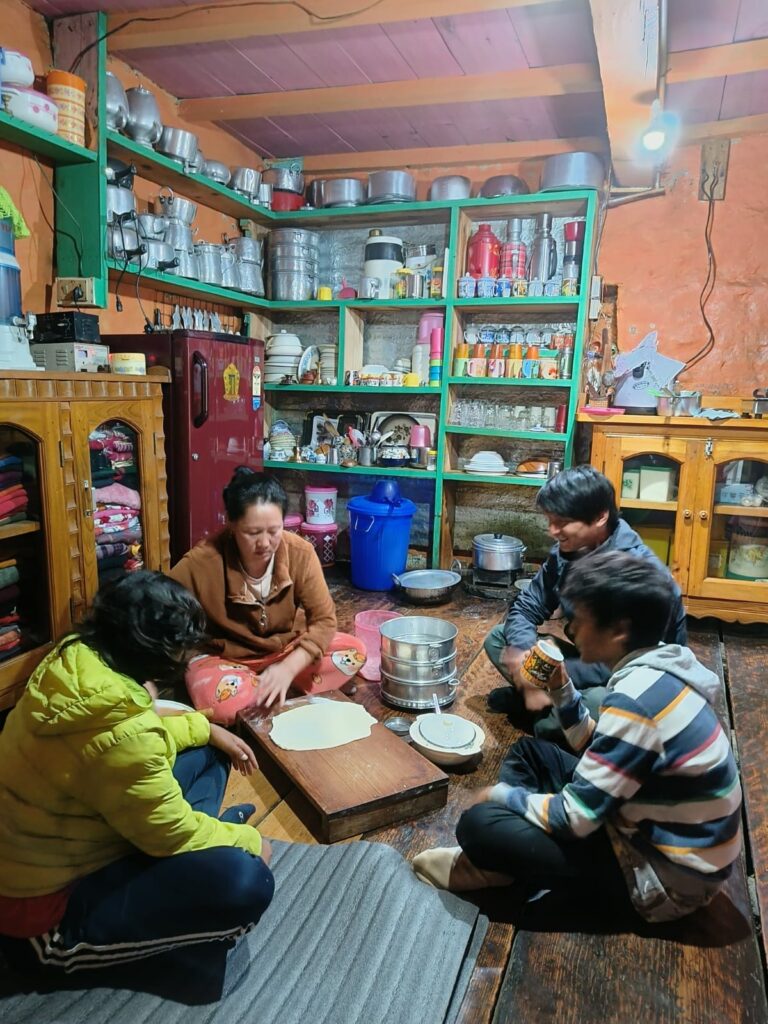
Day 7 – Sela Pass
We woke up to a rainy day which seemed to suggest that birding was not going to be possible. Nevertheless, we commenced to make our way up the misty, wet road to Sela Pass. Located at an altitude of 13,700 ft in Tawang district of Arunachal, the pass in usually covered in snow through most of the year. We stopped in light drizzle for the first Pipit and suddenly the bird world sprang to life: White-capped Redstarts, Fire-tailed Sunbirds and Myzornis and the beautiful Himalayan Rosefinch making an appearance.
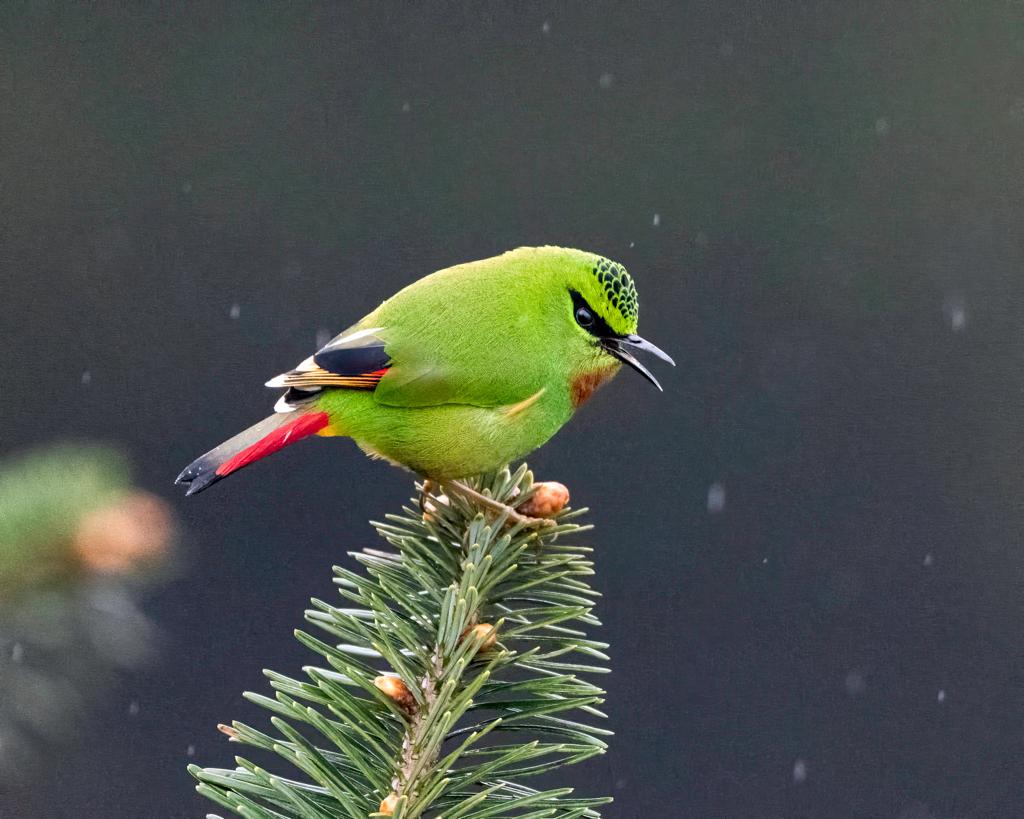
Further up the road we stopped in light snowfall (yes, snowfall in summer!) and clambered up a slope at about 11,000 ft to see the Black-faced Laughingthrush, a Golden Robin and the Black-throated Tit.
After a roadside breakfast of bread, eggs and coffee, we continued up to 12,500 ft to track the elusive Blood Pheasant, which Sela Pass is known for. While we didn’t manage to spot the colourful male, we managed to photograph the glamorous female.
Searching for the Snow Partridge at 13,700 ft in sleet at Sela Pass, unfortunately, was not a success, so we wandered beyond the Pass, in numbingly cold wind, through snow and slush, but only caught sight of a couple of female Grandalas who appeared as ghostly photographic shadows.
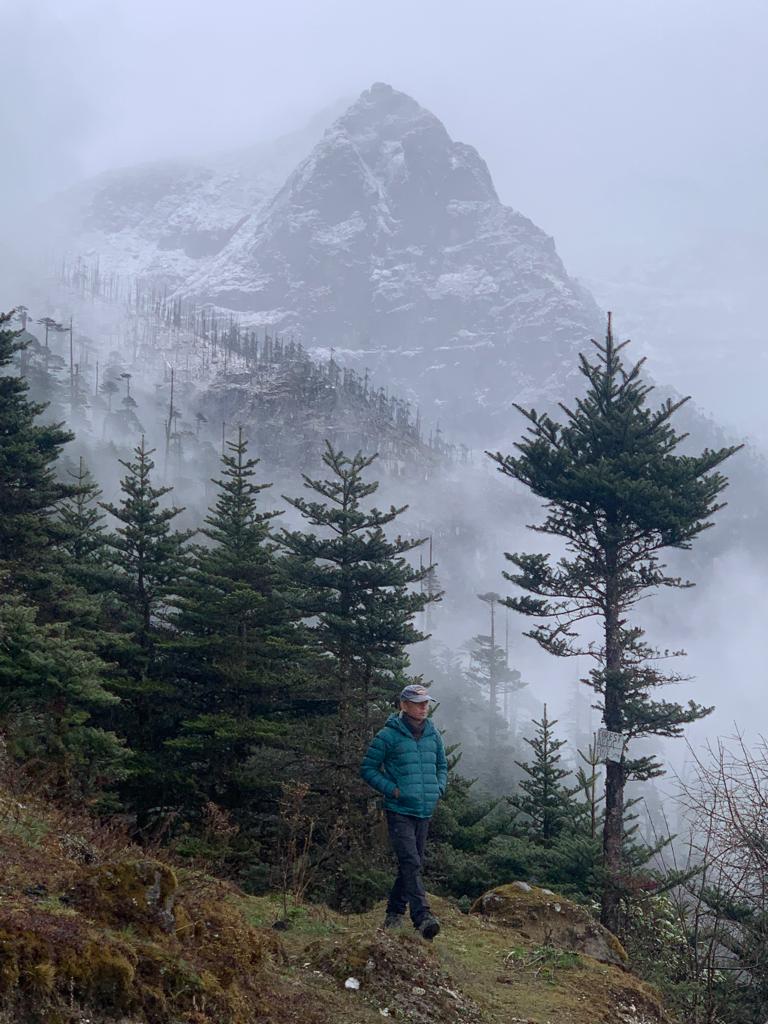
As we left the snowy hillside, we ran into an elderly foreigner couple bundled up and heading into the snowy white wilderness, tripod and all. I hope at their age of 75, I’m still able to go on adventures like this.
Finally it was on to a welcome hot stove, ginger tea and some maggi noodles in the one warm spot on the mountain. The mist returned so we had to head back down to Dirang for the night.
Day 8 – Dhekiajuli, Assam
As we drove to Assam, I did feel a bit sad that our time in the mountains was over. The entire drive was scenic and we did some impromptu stops along the way for some birding. A few of the stops were on the drive up to Chillipam Monastery. This route sees very less traffic and is filled with thickets of wild berry trees affording us sightings of Ashy Drongo, Black-headed Bulbul and Black Eagle.
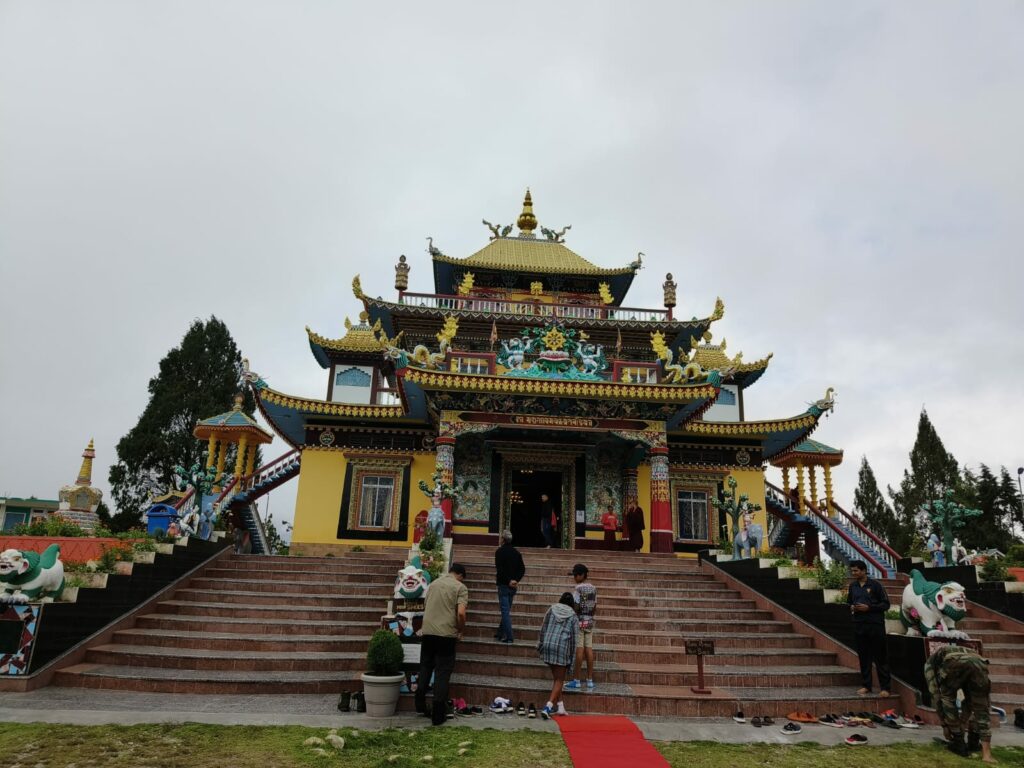
Chillipam Monastery has beautiful murals and very friendly monks who took us around the monastery. Recently they started a cafe on the grounds, serving the best honey lemon tea. It was a great to sit on the veranda and take in the views. Naturally we indulged in some birding from this vantage point too.
We stopped for a home-cooked lunch at a small homestay in Shergaon called Red Berry Inn. Located on the river, it was another great stop for birding, while the rest of us played with the cute puppies in the property.
The drive from Shergaon to Dhekiajuli is through Sonai Rupai Wildlife Sanctuary forest and is blessed with very little traffic. As we descended from the mountains to the plains of Assam, it was a beautiful drive and a fitting farewell to the Eastern Himalayas.
We got slightly lost as darkness fell and we made our way to our lovely homestay, Sapoi, for the night. Located in a beautiful tea garden, we were welcomed with an aarti and gracious staff. It was the perfect ending to our long adventure.


